Mata Ayam Tree
- November 12, 2024
- 0 comment
The Mata Ayam Tree (Ardisia elliptica), also known as the “Shoebutton Ardisia” is a small, evergreen tree or shrub native to tropical and subtropical regions. It plays an essential role in local ecosystems, contributing to soil health and supporting wildlife.
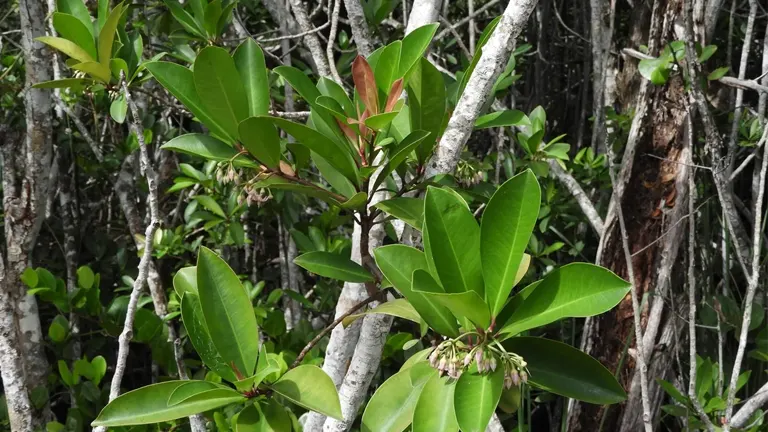
This tree is valued not only for its ecological benefits but also for its unique botanical characteristics and adaptability, making it an interesting subject of study for botanists and environmental enthusiasts.
What Is a Mata Ayam Tree?
The Mata Ayam Tree is a member of the Primulaceae family. It is recognized for its dense clusters of dark green, elliptical leaves and its small, dark purple to black berries. The tree typically grows between 2-5 meters tall, with a smooth, light-colored bark and small, star-shaped flowers that are usually white or pink.
Main Characteristics:
- Leaves: Glossy, dark green, elliptical, and alternately arranged.
- Flowers: Small, white or pink, fragrant, appearing in clusters.
- Fruit: Berries that turn from green to dark purple or black when ripe.
- Bark: Smooth and light-colored, with a subtle sheen.
Interesting Fact: The Mata Ayam Tree is sometimes considered invasive in non-native regions due to its rapid growth and seed dispersal.
Different Types of Mata Ayam Tree Species
The most well-known species of this tree is the Ardisia elliptica itself. However, related plants within the Ardisia genus vary in their growth habits, foliage, and fruiting. Some species include:
Ardisia Crenata (Coralberry)
Known for its red berries and used as an ornamental plant.
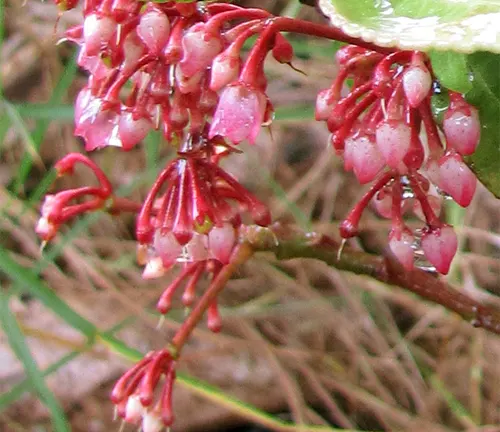
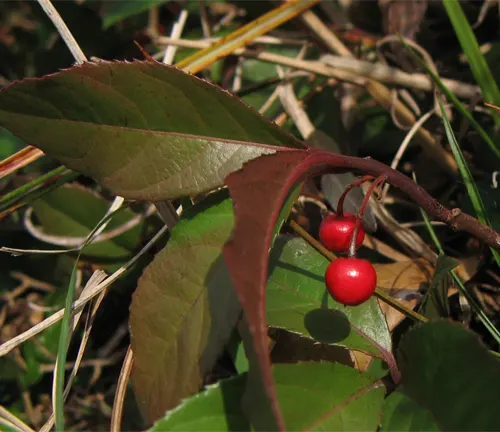
Ardisia Japonica (Marlberry)
Smaller and more ground-covering compared to A. elliptica, used in traditional medicine.
Ardisia Polycephala
Found primarily in tropical rainforests, contributing to forest density and biodiversity.
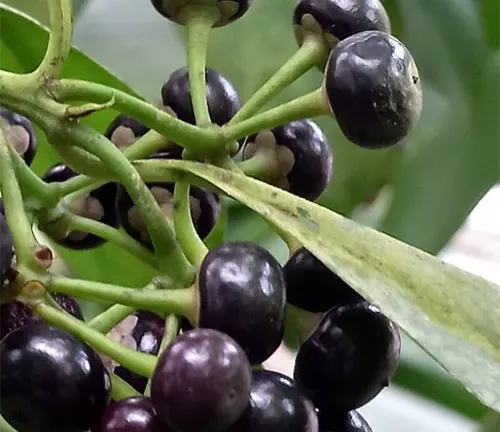
Ecological Importance of Species: Different species of Ardisia play a role in their native habitats by providing food sources for various birds and small mammals. Their dense foliage also helps in creating shaded understories that protect smaller plants and maintain soil moisture.
Where Do Mata Ayam Trees Grow?
The Mata Ayam Tree is native to tropical and subtropical climates, thriving in regions like Southeast Asia, parts of South America, and the Pacific Islands. This tree prefers moist, well-drained soils and is often found in forests, coastal areas, and even along riverbanks.
- Stabilizing soil: The tree’s root system helps prevent soil erosion.
- Providing habitat: Its dense foliage offers shelter for birds and insects.
- Supporting pollinators: The fragrant flowers attract bees and other pollinators, promoting biodiversity.
Ardisia elliptica has an impressive ability to adapt, growing in both shaded and partially sunny areas. Its drought-tolerant nature allows it to survive in areas that experience occasional dry spells, although it thrives best in humid environments.
How to Grow and Care for Mata Ayam Tree
Growing the Mata Ayam Tree can be rewarding due to its low-maintenance nature. Here’s how to ensure its optimal growth:

- Soil Type: Prefers rich, well-draining soil with a neutral to slightly acidic pH.
- Watering: Moderate water needs; avoid waterlogging.
- Sunlight: Grows well in partial to full sunlight.
Propagation Tips and Maintenance of the Mata Ayam Tree can be propagated through seeds or cuttings:
- Seeds: Collect ripe berries, remove the seeds, and plant them in a mixture of soil and compost.
- Cuttings: Take semi-hardwood cuttings, dip them in rooting hormone, and plant in well-draining soil.
- Pruning: Prune lightly to shape and remove dead or diseased branches.
- Pest Control: Keep an eye out for scale insects and use organic insecticides if necessary.
Ecological Benefits of Mata Ayam Tree
The Mata Ayam Tree offers numerous ecological advantages:
- Soil Improvement: It enhances soil structure and fertility through leaf litter decomposition.
- Erosion Control: Its extensive root system stabilizes the soil, preventing landslides and erosion.
- Biodiversity Support: The tree’s berries serve as a food source for birds, aiding seed dispersal and promoting forest regeneration.
Mata Ayam Tree Flowering and Pollination
The Mata Ayam Tree produces small, star-shaped flowers that are white or light pink. These blooms appear in clusters and emit a subtle, pleasant fragrance. Flowering usually occurs during warmer months, providing vital nectar for pollinators.
The flowers attract bees, butterflies, and other pollinators, which are crucial for fruit formation. This mutualistic relationship ensures the tree’s reproductive success and benefits the local pollinator populations.
Is Mata Ayam Tree Drought-Tolerant?
Ardisia elliptica shows a moderate level of drought tolerance, making it suitable for regions with periodic dry spells. It is resilient but benefits from regular watering in extremely hot climates to prevent stress and foliage loss.
Growing in Arid Conditions To cultivate Mata Ayam Trees in drier areas:
- Mulch around the base to retain moisture.
- Avoid overwatering, which can lead to root rot.
- Select drought-resistant varieties or acclimatize young plants to lower water conditions gradually.
Mata Ayam Tree and Wildlife Interactions
The Mata Ayam Tree is an essential part of its ecosystem, supporting a variety of wildlife:
Notable Interactions:
- Food Source: Its berries are a nutritious food for birds and small mammals.
- Shelter: Dense foliage provides protection for insects and nesting sites for birds.
- Symbiosis: Some bird species help disperse the tree’s seeds, aiding in natural regeneration.
In some regions, certain insects are known to pollinate the tree, creating a beneficial cycle that supports both plant and animal life.
Conclusions
The Mata Ayam Tree (Ardisia elliptica) holds significant ecological and cultural value. It aids in soil stabilization, supports biodiversity, and provides food and habitat for wildlife. Due to its adaptability and beneficial characteristics, it is an important species for conservation and environmental health. Preserving this tree helps maintain healthy ecosystems and promotes biodiversity, making it a valuable asset to both natural and human-altered landscapes.
Frequently Asked Questions (FAQs)
- What is the Mata Ayam Tree?
The Mata Ayam Tree is a small, evergreen tree known for its glossy leaves and dark berries, native to tropical and subtropical regions. - What is the scientific name of the Mata Ayam Tree?
The scientific name is Ardisia elliptica, part of the Primulaceae family. - Where does the Mata Ayam Tree grow?
It thrives in tropical and subtropical climates, often found in forests and coastal areas. - What are the ecological benefits of the Mata Ayam Tree?
It helps prevent soil erosion, improves soil health, and supports biodiversity by providing food and shelter for wildlife. - Is the Mata Ayam Tree drought-tolerant?
Yes, it can withstand periods of drought but grows best in humid, well-watered environments. - How can I grow a Mata Ayam Tree at home?
Plant it in well-drained soil, provide moderate water, and ensure partial to full sunlight. - What wildlife interacts with the Mata Ayam Tree?
Birds and small mammals eat its berries, aiding in seed dispersal, while pollinators are attracted to its flowers. - When does the Mata Ayam Tree flower?
It typically blooms in warmer months with small, white or pink fragrant flowers.
We hope this guide has shed light on the ecological and social importance of the Mata Ayam Tree (Ardisia elliptica). Have experiences or tips on growing or conserving this tree? Share your thoughts below and inspire others to value and protect this species. Don’t forget to share this guide with nature lovers to support biodiversity and sustainable practices.



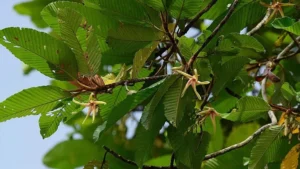
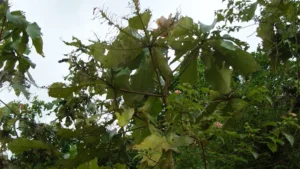

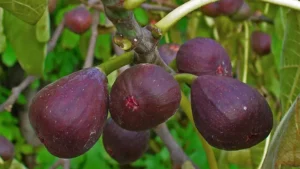



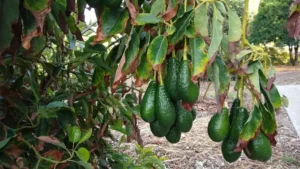
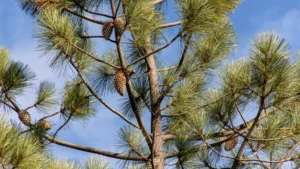


Leave your comment